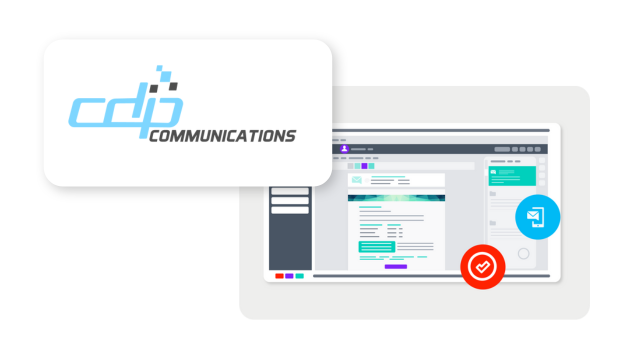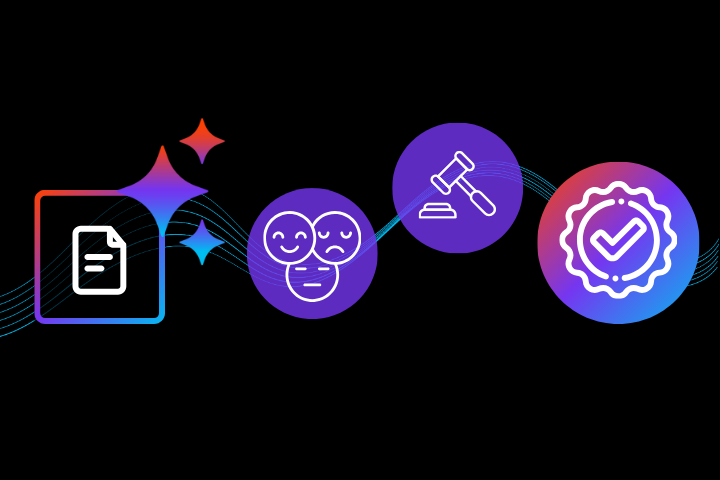
Some things can survive unsupported for a short while. You probably wouldn't bother getting a plant sitter if you went on vacation for a week. If you returned to a few brown leaves, you’d be confident that some extra water would revive it to full health. However, a customer communications management (CCM) software is less like a house plant, and more like a ticking time bomb.
Unfortunately, some CCM software providers take a permanent vacation from providing value to your business. Instead of jetting off to far-away sunsets, they sunset a product or service that your organisation has come to rely on. If a piece of software is no longer supported by the provider, it’s stagnant. There are no new features, no security patches, and no routine updates.
In the worst-case scenario, a vendor announces that software will soon be unsupported but doesn’t offer a clear migration path to a new solution. That puts the onus on your business to heavily invest in migration to supported software. As you know, executing a CCM migration is a monumental project that drains your team's time, and expends your company's resources — hardly a fair trade off with a provider that’s benefited from your business. Furthermore, this process must occur while you continue to create and deliver business-critical communications to your customers.
The path of least resistance is to stick with your current solution. But soon, you'll come to realize the damaging consequences of not acting — and recovery will be much more costly and time-consuming than spritzing a spider plant with some water.
The danger of downtime
The longer you risk using unsupported software, the more opportunity you give hackers to identify and exploit vulnerabilities, as regular updates are not being made to safeguard the system. Hackers can leverage this knowledge to execute cyberattacks, crashing the software and rendering it useless to your team.
Moreover, as unsupported software becomes outdated, it becomes less compatible with newer operating systems, leading to performance bottlenecks that jeopardise system availability. These two challenges increase the likelihood of downtime.
We all know that downtime isn’t good. The global IT outage of July 2024 offers an extreme example of the damage it can cause, including financial losses and the risk of being sued. In CCM, downtime stalls the creation and delivery of critical customer communications which can lead to delays, disruption, and frustration for customers. This has a significant negative impact on your company’s reputation and increases customer churn.
Your business may have experienced downtime, even while using supported software. If this happened, you would have had access to technical support behind the scenes that was provided by your vendor and likely included in your contract. A person at the end of the phone could tell you what was happening, help you to minimise potential risks, and get you back up and running again, quickly. But when software is unsupported, there’s no number to call and your business is left to fend for itself.
A compliance nightmare
It's not just the danger of downtime that organisations face when they rely on legacy, unsupported CCM software.
Across multiple geographies and industries, regulation is on the rise. At the same time, the way that communications are created and shared is becoming more varied and complex, with AI, integrations, personalisation, and new digital channels a growing part of the process. This creates more touchpoints in your communications workflows that are beholden to regulations. Regulatory changes — such as the EU Artificial Intelligence Act, and the Media Act 2024 — could render your communications practices non-compliant.
The built-in workflows of modern, supported CCM software can help your team to avoid non-compliance by enabling the creation of rules that prevent non-compliant communications from being sent. Features like content blocks, approval workflows, and automated rejections of rule-breaching content ensure clear and comprehensive protection against non-compliance.
However, if your CCM software isn’t being updated, these features won’t be as flexible or reliable. What was once dependable technology will soon become slow and glitchy as the unsupported software struggles to keep up with your organisation’s daily data volumes and intricate workflows. And slow and glitchy software doesn’t deliver effective protection against compliance risk.
Friction-filled workflows
Your team might have the skills, time, and patience to design and deliver customer communications using unsupported software. However, with the passing of each week or month, they’ll suffer increasing friction in their workflows.
In the short time frame that the unsupported legacy software is still usable, your team will find it harder to gather customer data from your company’s Customer Relationship Management (CRM) software. It’ll get more difficult to send large volumes of communications across multiple digital platforms.
When software is no longer supported, it doesn’t receive updates or improvements. This makes it incompatible with newer technologies or systems, leading to problems trying to integrate it with other applications in your tech stack. The lack of compatibility can lead to disruptions, inefficiencies, and even complete failures in your workflows. Your team will struggle to work productively, and your customer communication process will suffer.
This lack of trust in company tools will reduce employment engagement and satisfaction. Without intensive efforts within your business to mitigate these issues, employee disengagement can quickly lead to attrition. So, if your business doesn’t invest in migrating to a supported CCM software that empowers your employees to work effectively, it’ll soon face a far greater challenge: high employee turnover.
What should you do if your CCM software is soon to be unsupported?
Sticking with an unsupported CCM is a risky game. But what options are there?
- Stick with the unsupported CCM and cross your fingers (and hope you don't get caught out on a CrowdStrike level).
- Invest time and money in migrating to another CCM solution with the same vendor (and hope your provider is more committed to the next software you invest in).
We understand these options aren't appealing. Fortunately, we do have a third option if you're interested.
Migrate to Quadient Inspire — an innovative CCM solution developed by a company that cares about its customers — and benefit from:
- 50% faster migration powered by AI technology.
- An established migration process that’s successfully migrated tens of thousands of templates from other CCM solutions.
- Continuous CCM innovation as Quadient Inspire is updated every 2 months.
- Customer-centric service. Our CCM solution has a 99% customer renewal rate and a 98% customer recommendation rate.
- Dedicated technical support, including regional technical support.
- Proven CCM excellence, underpinned by recognition from established industry analysts, including IDC and Aspire.
Want to make a change before unsupported CCM software blows a hole through your business? Discover how Inspire Xpress can help you implement change fast.





